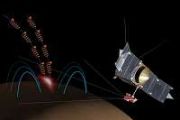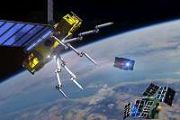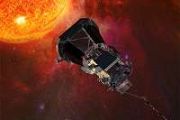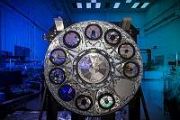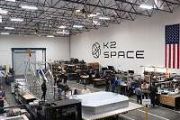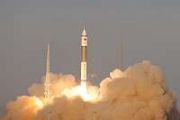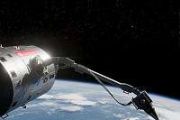
Copernical Team
Webb Telescope fully focused for the job ahead
 Alignment of the James Webb Space Telescope is now complete. After full review, the observatory has been confirmed to be capable of capturing crisp, well-focused images with each of its four powerful onboard science instruments.
Upon completing the seventh and final stage of telescope alignment, the team held a set of key decision meetings and unanimously agreed that Webb is ready to move
Alignment of the James Webb Space Telescope is now complete. After full review, the observatory has been confirmed to be capable of capturing crisp, well-focused images with each of its four powerful onboard science instruments.
Upon completing the seventh and final stage of telescope alignment, the team held a set of key decision meetings and unanimously agreed that Webb is ready to move Canada to prosecute crimes on the moon

Canadian lawmakers were set to vote Thursday on amending the nation's Criminal Code to allow for the prosecution of crimes committed on the moon.
The proposed change to the law—which was expected to be passed—was described in a 443-page budget implementation bill presented to Parliament this week.
NASA's Webb telescope is now in full focus, ready for instrument commissioning
Canada looks to prosecute crimes on the moon

Canadian lawmakers were set to vote Thursday on amending the nation's Criminal Code to allow for the prosecution of crimes committed on the moon.
The proposed change to the law—which was expected to be passed—was described in a 443-page budget implementation bill presented to Parliament this week.
Webb in full focus
 Image:
Webb in full focus
Image:
Webb in full focus NASA's Crew-4 docks at ISS
 NASA astronauts Mission Commander Kjell Lindgren, Pilot Bob Hines, and Mission Specialist Jessica Watkins, and Mission Specialist Samantha Cristoforetti of ESA now are aboard the ISS following Crew Dragon's hatch opening. Crew-4 joins Expedition 67 crew of Raja Chari, Thomas Marshburn, and Kayla Barron, all of NASA, Matthias Maurer of ESA, and cosmonauts Oleg Artemyev, Sergey Korsakov, and Denis Matveev of Roscosmos.
NASA astronauts Mission Commander Kjell Lindgren, Pilot Bob Hines, and Mission Specialist Jessica Watkins, and Mission Specialist Samantha Cristoforetti of ESA now are aboard the ISS following Crew Dragon's hatch opening. Crew-4 joins Expedition 67 crew of Raja Chari, Thomas Marshburn, and Kayla Barron, all of NASA, Matthias Maurer of ESA, and cosmonauts Oleg Artemyev, Sergey Korsakov, and Denis Matveev of Roscosmos. Samantha Cristoforetti and the rest of Crew-4 arrives at the International Space Station
 Video:
00:01:34
Video:
00:01:34
ESA astronaut Samantha Cristoforetti and NASA astronauts Kjell Lindgren, Robert “Bob” Hines and Jessica Watkins arrive at the International Space Station after docking at 01:37 CEST on Thursday 28 April 2022.
Collectively known as Crew-4, the four astronauts were launched at 08:52 BST/09:52 CEST Wednesday 27 April from NASA’s Kennedy Space Center in Florida USA. Transit to the Station is expected to take under 24 hours.
Samantha is the third ESA astronaut to travel to the orbital outpost in a Crew Dragon. During the journey she and Jessica will serve as mission specialists. Kjell is Crew-4 Commander and Bob
Tantalising tectonics

This network of long grooves and scratches forms part of a giant fault system on Mars known as Tantalus Fossae, and is shown here as seen by ESA’s Mars Express.
Could the blueprint for life have been generated in asteroids
 Using new analyses, scientists have just found the last two of the five informational units of DNA and RNA that had yet to be discovered in samples from meteorites. While it is unlikely that DNA could be formed in a meteorite, this discovery demonstrates that these genetic parts are available for delivery and could have contributed to the development of the instructional molecules on early Earth
Using new analyses, scientists have just found the last two of the five informational units of DNA and RNA that had yet to be discovered in samples from meteorites. While it is unlikely that DNA could be formed in a meteorite, this discovery demonstrates that these genetic parts are available for delivery and could have contributed to the development of the instructional molecules on early Earth PAR Government teams up with BlackSky to deliver near real-time imagery
 PAR Technology Corporation (NYSE: PAR) has announced that its wholly-owned subsidiary PAR Government Systems Corporation (PGSC) has incorporated BlackSky's (NYSE: BKSY) commercial satellite data into the Sit(x) cloud-native situational awareness suite making it possible for tactical and operational end users to access near real-time imagery on the Tactical Assault Kit (TAK) mobile platform.
PAR Technology Corporation (NYSE: PAR) has announced that its wholly-owned subsidiary PAR Government Systems Corporation (PGSC) has incorporated BlackSky's (NYSE: BKSY) commercial satellite data into the Sit(x) cloud-native situational awareness suite making it possible for tactical and operational end users to access near real-time imagery on the Tactical Assault Kit (TAK) mobile platform. 


